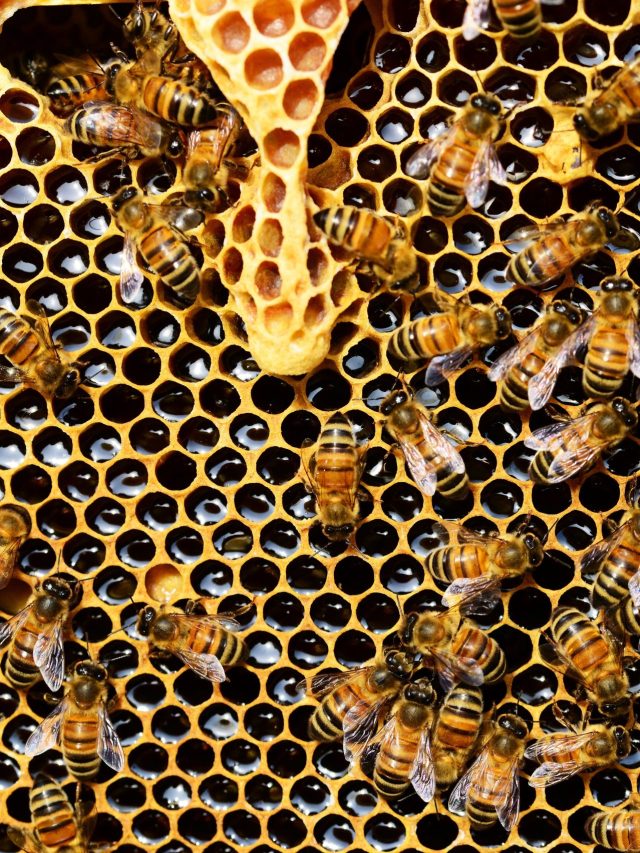Spices have always been an important part of the cuisine worldwide and the most common one of all spices is chili or hot pepper. But the problem with pepper is that there is a wide range. And when I say wide range, I am talking about 1000 odd varieties only in pepper. What’s interesting though is that the indigenous varieties of pepper have always held a special place in people’s cuisine. In India, there are around 500 varieties of chilies that are cultivated commercially. Most of them are hybrids and are commercially available but there has always been a constant market for the indigenous varieties of chili peppers.
The bird’s eye chili has been around for years or to be precise, centuries. Even with the ever-growing list of hybrid varieties of chili peppers, the indigenous varieties fail to give up and hold a special place in the market. They demand a higher price and have been always rated better than hybrid varieties when it comes to taste and flavor.
The bird-eye chilies are hot, with a Scoville score of 100,000, which falls on the lower range of habanero pepper. Surely hotter than the jalapenos and almost all the pepper in the hybrid varieties grown in India.
when it comes to farming chilies, these have a very niche market. Cultivated in parts of kerala and the easter parts of India, these chilies are almost like the exotic peppers in the rest of India. It is cultivated in very small pockets of Gujarat, Maharashtra, Tamil Nadu, and many other parts of the country, and when it is in the market, they are really expensive. A 100 Grams usually costs 25 Rs and that’s on the lower side in the cities and could go up to 40 or even 50. In the rural parts of Kerala, where things are supposedly much cheaper, the bird’s eye chili still costs you 250 rs per kg, and that’s throughout the year, doesn’t matter what season it is. It does go a bit low at times but on average that’s the price.
Why cultivate Birds eye chili
- To begin with, this is an indigenous variety of chilies. Which comes with its pros and cons. The pros in this case being it’s very much tolerant to many parts of the country. Too much rain, no problem, too hot, no problem. They survive. Diseases are much lesser
- Consistent demand. The chilies are seasonal but with proper irrigation, they can be harvested year-round. This provides an opportunity for farmers to get a constant income throughout the year.
- Perennial plant. Unlike normal chili peppers and hybrid varieties available in the market, the Birds eye chili or kanthari chili is a perennial plant that will live up to 6 years and a bit more. The yield is consistently good for 4 years and the yield starts in 4-5 months. This saves the constant change of crops for farmers and the hassle of replanting new ones every season or year.
- The same care and fertilizers as the normal chili: There is no difference in the process of growing chilies which are hybrid and the bird’s eye chili Everything remains the same. Fertilizers, Irrigation, and even the distance and setup are just about the same. There is no need to learn anything new as long as you can grow chilies of any variety.
birds eye chili cultivation in India
The majority of Birds eye chili is cultivated in Meghalaya, Assam, and Kerala. Meghalaya and Assam are known to have the widest range of chili peppers in India and some of them are known to be exquisite, hot, and exotic. The boot Jolokia for instance is known for its high intense flavor and is cultivated in these areas. The BBirdseyechilli is commonly grown in these three states and is consumed widely. Apart from the local use, the pepper is also sold to other states nearby and interestingly has a constant demand internationally. The United States, South Africa, and Australia are importers of Birds eye chili every year, and Kochi, Delhi, and Chennai are the ports from where they are exported. The chilies are exported fresh and in oven-dried forms.
The strange thing is that the Market in India is so huge that bird’s eye chili demand is surplus. Farmers at the current state cannot fulfill the requirement of the local market itself and it’s not just the urban areas, but even the rural areas of India where cultivation of birds eye chili is quite common cannot meet the market demands.
So when it comes to the Cultivation of Birds eye chili in India, you can be assured of profits.
Growth or Kanthari Chilli from Seed to Harvest
Day 1-3: Germination The first few days after planting the Bird Eye chilli seeds, you’ll notice little to no growth. This is because the seeds are busy germinating beneath the soil. Keep the soil moist, warm, and in a well-lit area to encourage healthy growth.
Day 4-7: Seedling growth Around the fourth day, you’ll begin to see the first signs of life as small green shoots emerge from the soil. These will soon develop into seedlings that grow a few inches tall over the next few days. It’s important to continue providing ample sunlight and water to support healthy growth.
Day 8-14: First true leaves Around a week after germination, you’ll notice the first true leaves of the Bird Eye chilli plant begin to develop. These leaves will be larger and more distinct than the initial seedling leaves. At this point, you can begin to introduce a light fertilizer to support growth.
Day 15-21: Stem and leaf growth As the plant continues to mature, you’ll notice a significant increase in the size of both the stems and leaves. At this point, you may need to provide additional support to prevent the plants from bending or breaking under their own weight.
Day 22-30: Flowering Around three weeks after germination, the Bird Eye chilli plants will begin to produce flowers. These small white or green flowers will eventually give way to fruit. Continue to provide ample water and nutrients to support healthy fruit development.
Day 31-90: Fruit growth and ripening Over the next several weeks, the Bird Eye chilli fruits will continue to grow and ripen. They’ll start off small and green, gradually turning yellow, orange, and finally, bright red. The time it takes for the fruits to ripen will depend on various factors, including temperature, sunlight, and humidity.
Day 90+: Harvesting Once the Bird Eye chilli fruits have reached their full size and color, they’re ready to be harvested. Carefully pluck the fruits from the plant, taking care not to damage the stem or other fruits. You can use them fresh or dry them for later use.
Birdseye chili yield and profit per acre.
You can plant approximately 22,000 Plants per acre with a spacing of 30 cm by 60 Cm. Each plant will yield around 250 Grams per plant every year for the first 4-5 years. The yield will decrease from the 5th year in most cases and will be very poor in the sixth. The average yield per acre of birds eye chili is roughly 2 Tonnes per acre. This may sound less and it is. But when you look at the total turnover or the revenue the plant generates, it is approximately
500,000 per year. This is a huge amount considering that normal chili cultivation would not earn you that much. Normal chili (Hybrid) though has a high yield, the market price for the same range anywhere between 10-60 rupees. But with the bird’s eye chili, the yield though low, the price is always 250 rs per kilo. Even with a 50% price drop, you would still earn 250,000 Rupees every year and that’s still a large margin and high profit.
| Land preparation | 25000 |
| Drip irrigation and setup | 50,000 |
| Plant Saplings For one acre | 10,000 |
| Fertilizers and manure | 35,000 |
| Irrigation | 15000 |
| Pesticides | 5000 |
| Labour | 45000 |
| Harvesting | 50,000 |
| Weed control | 15000 |
| Marketing and Transportation | 5000 |
| Miscellaneous | 15000 |
| Total Expense | 2,70,000 |
Profit per acre of birds eye chili farming.
| Year 1 | Year 2 | Year 3 | |
| Yield Per acre | 2000 KG | 2000 KG | 2000 KG |
| Cost / Expenditure | 2,70,000 | 150,000 | 1,50,000 |
| Total Revenue | 500,000 | 500,000 | 500,000 |
| Profit | 2,30,00 | 3,50,000 | 3,50,000 |
Caveats to birds eye chilly cultivation.
Not everything is as good as it looks. There are problems with cultivating bird-eye chili.
- The biggest problem for farmers who cultivate chili is harvesting. Harvesting is done by hand and there is no machinery or tools. A person can harvest not more than 5 KG per day. The chilies are small and to harvest, even a kilo of the chilies make a tremendous amount of time. Harvesting of one acre of land takes approximately 8-10 days. This is good in a way because once the first cycle is complete the plants are ready for a second harvest if irrigation and fertilizers are sufficient.
- Pests: Pests are common problems in chilies and the same pests affect birds eye chili too. Aphids, thrips, powdery mildew, and other pests which are common in chilies are the same which attack bird’s eye chilies. Pesticide sprays are often used to control pests and when organically cultivated, spray cow urine, neem oil, and Buttermilk when pests are seen.
Ref : https://www.researchgate.net/publication/343627545_Evaluation_of_Bird’s_Eye_Chilli_Accessions_Capsicum_frutescens_L_for_Growth_and_Yield_Traits#:~:text=26%20recorded%20maximum%20plant%20height,(20.71%20q%2Fha).




